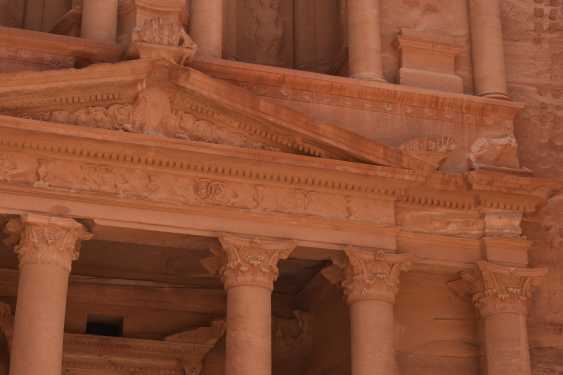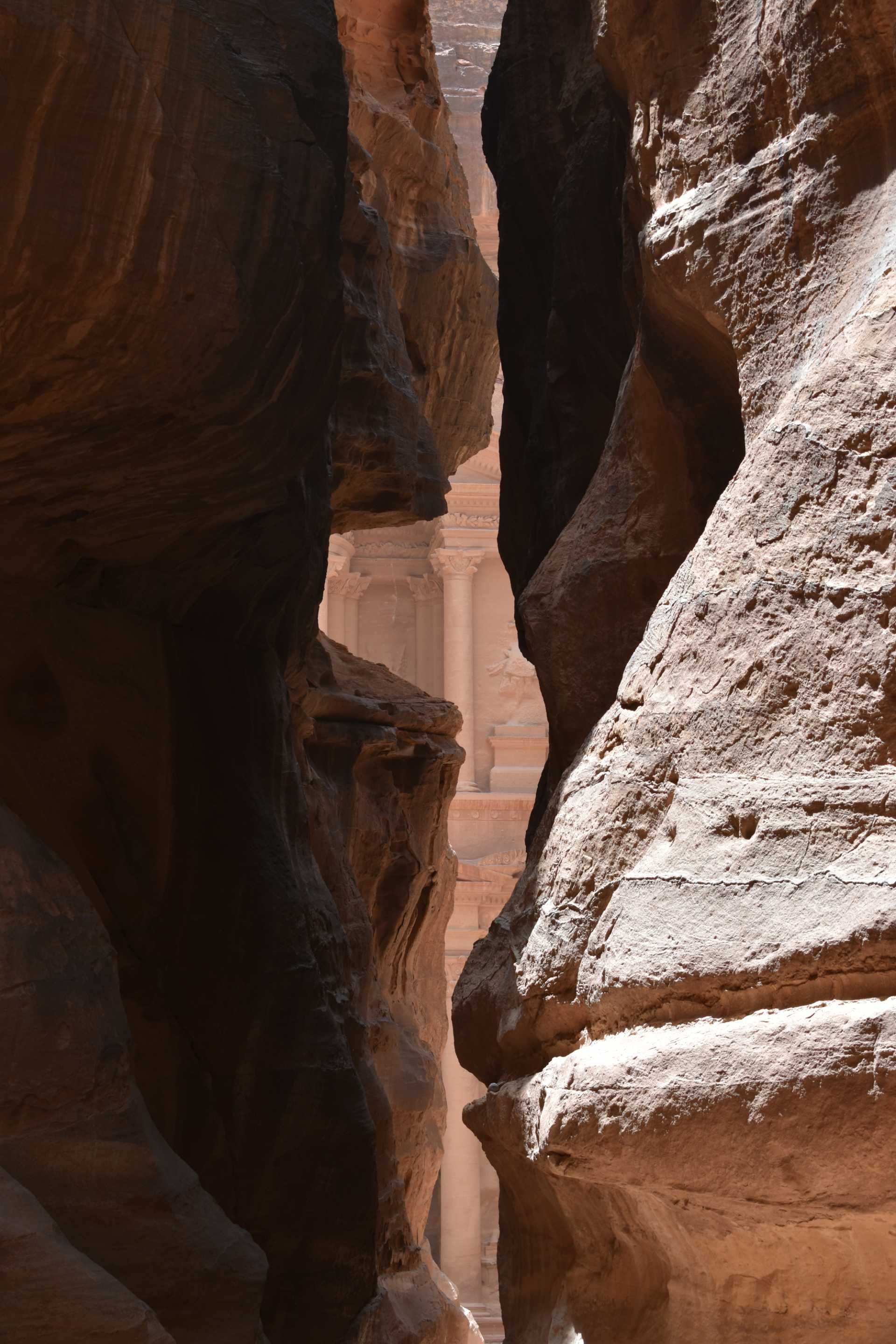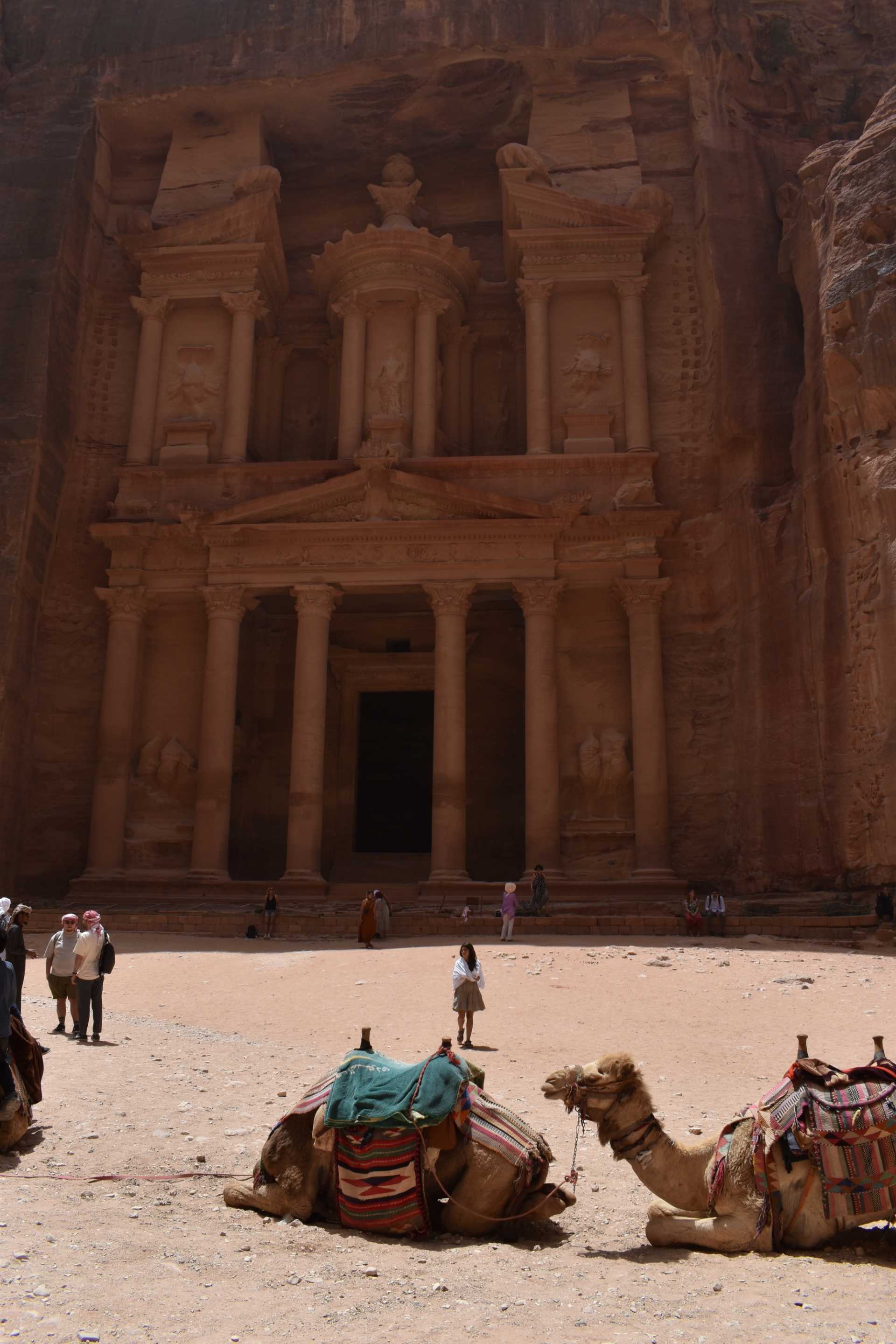
Petra and the weight of expectation
The majesty of Petra, one of the seven new wonders of the world, creates a weight of expectation that can burden one's visit. It is a burden that can be lifted by savouring the memories and emotions of others.
There is a weight of expectation that can burden the journey to such jewels of humanity. It is a nagging pressure that can quickly submerge the entire adventure of those who’ve studied the contested histories and meanings surrounding these ancient sites in preparation for the very day of revelation. Prior to visiting Petra, the Jordanian city carved into sandstone by the long-forgotten Nabataean civilization, a friend declared without hesitation that it was one of only two places, alongside Venice, which had exceeded his expectations. Such words weighed heavily upon my own sense of anticipation.

The suspense mounted as the complex drew closer. Through the Siq (meaning literally ‘the Shaft’) we moved. This narrow gorge of towering sedimentary rock was simultaneously claustrophobic and enthralling. Study both sides and one can appreciate the geological split, its edges softened by water, which created this tantalising passageway. Though just over a kilometre in length, we were seemingly treading deeper in the desert sands such is our seeming lack of progress.

After several false dawns, a slither of the Treasury finally appeared before us, bathed in the numbing glare of the mid-morning sun. That first full glimpse was the definitive one; the memory that endures even after you’ve indulged the entire complex. It was the moment that framed the rest of the journey into this vast complex of temples and tombs.

Alas, the Treasury is little more than a facade, like one of those erected on a film set. The twin figures of Castor and Polydeuces, a symbol of hope and redemption, still stand prominent beneath dancing Amazons. The sculptures are almost as distinct as the day they were carved. It is truly magnificent. Were it not for its colour, one could easily conclude that the Treasury was carved out of marble, such is the prominence of its columns and arches. The variations of light throughout the course of the day make it almost impossible to determine the actual shade of this compressed rock. From pink to white to red to orange to yellow, it does not possess its own or a single shade that can proffer a fixed and definitive description. It is constantly in a state of flux. Blink and it will appear differently. As the sun recedes, so a new dimension of shadow is at play, with all its menacing shades of grey.

Plenty of light has been shone upon this place, not least by films such as ‘Indiana Jones and the Last Crusade’. Thomas Edward Lawrence, better known as 'Lawrence of Arabia', further popularised Jordan and the wonders of its people and scenery through his memoirs, ‘Seven Pillars of Wisdom’, which inspired a 1962 epic starring Peter O'Toole. In 2007 Petra was named one of the seven new wonders of the world, alongside the Taj Mahal, Machu Picchu, the Great Wall of China, Chichén Itzá El Castillo, the Christ the Redeemer statue, and the Colosseum. From being virtually abandoned to the elements, Petra has assumed its place amongst the pinnacle of world heritage.

The Treasury’s name derives from the Bedouins’ belief that it boasted valuable treasures once belonging to an Egyptian pharaoh. Look up at the funerary urn on its upper course and you will see where bullets have been expended in a vain attempt to liberate its supposed wealth. Other treasures have been plundered over the centuries. Now tourists replenish some of the lost wealth. Teenagers offer tourists an Instagram-friendly service on their mobile phones, replete with filters and vantage points which reify one’s memories of the monument and moments. From a rocky outcrop, one can be photographed in a pensive pose, reflecting upon the number of likes and hashtag possibilities. Hawkers here move with the times, creating an offering most unsuspecting tourists didn’t realise they needed or wanted. Camels slumbered in the expanding shade. Watch the Arab revolt in Aqaba scene in ‘Lawrence of Arabia’ and one’s perception of camels as mild-mannered, servile creatures, plodding across the desert with seemingly endless endurance, will be eternally challenged. One staggered to its feet to transport the hind of a crimson-faced sightseer. That this complex remained lost for many centuries, at least to those beyond the immediate vicinity, only adds to its allure. It was rediscovered in 1812 by the Swiss explorer, Johann Ludwig Burckhardt, whose knowledge of the local language and customs helped endear him to the community and gain access to the site. He is more than deserving of the designation 'explorer'; a term which seems to apply no longer to voyages on land, only those of space and the deepest seas. Though much of the wealth may have been plundered, there is likely more still to be excavated. Today’s treasure hunters employ satellite imagery and drone photography to scour the landscape for signs of structures beneath the accumulations of sand over the last almost two millennia. The work is painstaking.

Yet Petra is more vulnerable than most world heritage sites to deterioration, with only flimsy fences to hold tourists back. Fingertips run across the rock face, displacing a few more precious grains. As more and more eager hands descend upon this gem, a safer distance will have to be ensured. The weight of expectation acts as a magnetic force, drawing people forward in search of an additional sensory dimension that would be considered criminal in an art gallery. It is a place that lingers in the mind even of a then three-year-old. ‘Petra, Petra!’, he shouts when finding a fridge magnet in an apartment he is visiting. For often it is the memories and emotions of others, particularly those dearest to you, that help meet and surpass the very expectations that accompany such journeys.
Ian is a writer based in the Balkans. He is the author of 'Dragon's Teeth - Tales from North Kosovo' and 'Luka'. Follow Ian on Twitter @bancroftian.
Currently in: Belgrade, Serbia — @bancroftian
